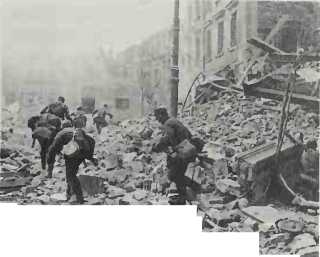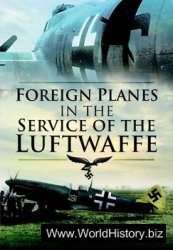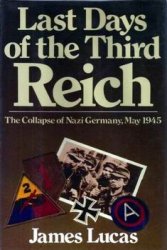War crimes. The desire to make the Nazi leaders and their more fanatical adherents accountable for instigating and prosecuting World War II led to the establishment of an Allied War Crimes Commission in October 1942. After the war Allied Military Tribunals at Nuremberg and Tokyo tried individuals indicted as war criminals.
Warlimont, Lt Gen (General der Artillerie) Walther (b. l894). Ger. The German Defence Ministry’s representative at Franco’s hq during the early stages of the Spanish Civil War, Warlimont became Chief of the National Defence Section, OKW, in 1938 and in September 1939 was appointed Deputy-Chief, Armed Forces Operational Staff (Wehrmachtsfilhrungsstab), OKW. As such, he was concerned in all major German military plans, but usually subjected his own judgment to Hitler’s will. His major importance lies in the light that his postwar testimony sheds on Hitler’s relationship with the high command. Although injured in the July Plot, 1944, Warlimont was immediately sent to Normandy as Hitler’s personal representative to von Kluge, with orders to stiffen his resistance to the Allied advance. Possibly affected by his realization of the gravity of Germany’s situation, Warlimont collapsed after reporting back to the Fiihrer, remaining unfit for service until the war’s end. RO’N.
Warsaw, Battle of (1914). Once the German General Staff realized the extent of the Austrian defeat in Galicia, they moved rapidly to forestall a Russian invasion of Silesia. The efficiency of their mobilization system permitted the immediate formation of a new Army, the Ninth, which deployed southwest of Warsaw under Hin-denburg on September 28 and advanced at once. Progress was rapid and the line of the Vistula was reached on October 9. A week later, German patrols were only 12 miles (19km) from Warsaw. Grand Duke Nicholas, overall the Russian c-in-c, reacted decisively to this threat. In a brilliant feat of staff work and hard marching, he switched 12 corps from Galicia to a position north of Warsaw, threatening Hindenburg’s left. Heavy rains now turned the primitive Polish roads into quagmires. The Germans retired and by November 1 were back on their start line of September 28. The withdrawal was covered by a skilful demolition programme which prevented the Russians from following up.
The Austrians, still smarting under their initial reverse in Galicia and German failure to go to their help, had declined to advance north to link up with Hindenburg, but did send their First Army across the Vistula towards Ivan-gorod, where it was defeated and forced back in disarray on Cracow. Elsewhere, they met with some success and relieved Przemysl, but were then held by the Russians, whose left (southern) flank remained secure.
On November 14 Hindenburg was appointed c-in-c of all German armies on the Eastern front. Handing over the Ninth Army to Mackensen, he prepared a new offensive on the northern flank of the Polish salient. He and Luden-dorff believed that Russia could be knocked out by a single masterstroke, launched before the onset of winter with heavy reinforcements from the Western Front. Falkenhayn, at Supreme Headquarters, disagreed. He still had his eyes fixed on the Channel ports in France and when he eventually released formations for the East, it was too late.
Mackensen, with three-and-a-
'half corps and five cavalry divisions, moved them in 800 trainloads round to the north of the salient and advanced on Warsaw with his left flank on the Vistula, covering 50 miles (80km) in the first four days. Lodz fell on December 6, but only after stubborn resistance. Winter was now setting in and the Germans were still 35 miles (56km) short of Wai'saw. The front stabilized and both sides dug in to await the spring.
On the Galician front, winter also put an end to manoeuvre after Conrad had attacked the Russian left flank from across the Carpathians, and the line stabilized on the River Dunajec. MH. See also
EASTERN FRONT (l915); GORLICE-TARNOW OFFENSIVE.
Warsaw, fall of (1939). Poland’s strategy in meeting the German invasion of September 1 1939 relied upon a concentration of forces on the frontier. However, the speed and dynamism of the German attack rendered this ineffective and by September von Reichenau’s Tenth Army had reached the outskirts of Warsaw. The next day the 4th Panzer Division attacked from the southwest but was repulsed by Polish Army and civilian units. Although Hitler was consequently obliged to abandon hopes of a quick seizure of Warsaw, by the 16th the city was surrounded and the Germans laid siege to it. On the 24th over 1,000 German aircraft launched massed air raids against the city, followed on the 26th by a ground assault. With supplies of food and ammunition exhausted, the city was forced to capitulate the next day. Approximately 10,000 civilians and 2,000 Polish soldiers had been killed and
140,000 troops taken prisoner. MS.
Warsaw Pact (the East European Mutual Assistance Treaty). Signed on May 14 1955 for 20 years by Albania, Bulgaria, Czechoslovakia, East Germany, Hungary, Poland, Romania and the Soviet Union. The treaty was a direct response to the establishment of the Western European Union (weu) and an agreement signed in Paris permitting West Germany to enter NATO. This was condemned by the eight powers in a declaration issued at the end of a conference held in Moscow in November/ December 1954 as encouraging a revival of German militarism. By March 1955 agreement was reached as to the terms of a treaty of mutual assistance and the setting up of a unified command system (with a combined general staff based in Moscow). Within six days of West Germany acceding to NATO, the treaty was signed by the eight powers, though East German forces were not included in the military structure until January
1956. In September 1968, in protest against the Soviet invasion of Czechoslovakia, Albania withdrew from the Warsaw Pact. At the 1974 Warsaw Meeting, the Pact countries declared their willingness to disband if nato did likewise, but so long as this existed and without “effective disarmament measures”, it would continue. In May 1985 the Pact was renewed for a further 20 years. BHR.

Ruin in Warsaw after the rising of 1944
Warsaw rising (1944). By the end of July 1944 the Red Army was on the outskirts of Warsaw. In anticipation of their arrival, on August 1 Gen Bor-Komorowski, the commander of the Polish Home Army, ordered an uprising against the German garrison. Although they gained control of three-quarters of the city, events took a disastrous turn when the Soviet advance halted and the Germans reinforced the garrison. Stalin rejected all appeals for assistance and attempts to supply the uprising by air from the west proved costly and inadequate. Having endured two months of ferocious fighting and with his surviving units seeking the safety of the sewers, Bor-Komorowski was forced to surrender. When resistance ended on October 2 Warsaw lay devastated and some 200,000 of its inhabitants had become casualties. MS.
Warspite. One of the grandest British battleships of the 20th century. 15in guns. Served throughout both world wars including at Jutland, 1916, and at Narvik and in the Mediterranean in the second.
War Zone C. The scene of major search and destroy operations by US and South Vietnamese forces during the Vietnam War. Roughly triangular in shape, with the Cambodian border for its base, the zone extended through Tay Ninh, Binh Long and Binh Duong provinces to a point about 25 miles (40km) from Saigon. Proximity to supply bases in Cambodia made the zone a major staging area for communist forces. Operation “Attleboro” occurred in the zone during the autumn of 1966. See
Also JUNCTION CITY OPERATION (l967).
War Zone D. Just to the east of War Zone C in South Vietnam lay War Zone D, an area about 46 miles (75km) by 93 miles (150km) in size. The zone’s jungled, hilly terrain provided excellent cover for communist forces moving against the Saigon-Bien Hoa area, and the US and South Vietnamese launched numerous operations to interdict them. War Zones C and D and the Iron Triangle met at a point in the town of Ben Cat about 25 miles (40km) northwest of Saigon.
Washington Conferences. Meetings between Churchill and Roosevelt and their military advisers in Washington December 22
1941-January 14 1942 (“Arcadia”), June 19-25 1942 and May 12-25 1943 (“Trident”).
“Arcadia” took place at Churchill’s initiative in the immediate wake of Pearl Harbor. Despite the Japanese threat it was agreed that a Germany-first policy would be pursued. Machinery to coordinate the work and views of the British Chiefs of Staff and the American Joint Chiefs of Staff was set up in the form of the Combined Chiefs of Staff.
June 1942 (not coded). It was decided to pool Anglo-American research on atomic energy with a view to the production of a bomb in America. There was also discussion of where and how to deploy Anglo-American armies into Europe which raised the issue of a Mediterranean versus a northern French strategy.
“Trident” continued this theme in the light of what should be done after the successful invasion of Sicily. The British wish to achieve the conquest of Italy was to some extent challenged by American anxiety about the need to build up for the invasion of northern France and to increase the pressure on Japan. ANF.
Washington. US battleship. North Carolina class. Completed 1942. Briefly in the Atlantic, then sank Kirishima at Guadalcanal. Remained in the Pacific for the rest of the war.
Wasp. US aircraft carriers. (1) Designed to use up the remaining treaty tonnage, therefore smaller than similar Yorktown class. Completed in 1942. Flew off Spitfires for Malta before going to the Pacific where sunk by submarine. (2) Essex class completed 1943. Served in the Pacific. Left service 1972.
Watson-Watt, Sir Robert (1892
1973). Br. A leading contributor to the application of radar to air defence. Somewhat by chance, Watson-Watt put it into the minds of the Tizard Committee that radio pulses, which he had been studying for meteorological purposes, might be used to detect the presence of aircraft.
Wavell, Field Marshal, the Earl
(1883-1950). Br. c-in-c Middle East at the outbreak of World War II. He masterminded the Western Desert, East African, Greek, Iraq, and Syrian campaigns of 1940 and 1941, but he lost Churchill’s confidence after the failure of the second offensive to relieve Tobruk, June 1941. Succeeded by Auchin-leck on July 5 1941, and sent to replace him as c-in-c, India.
After Pearl Harbor, he was given the additional appointment of Supreme Commander of the American, British, Dutch and Australian (abda) forces in the Western Pacific with his headquarters in Java, but never had the resources with which to check the Japanese offensive. His command was disbanded in February 1942, and he returned to India to concentrate upon the defeat of the Japanese invasion of India from Burma. In June 1943 he succeeded Lord Linlithgow as Viceroy of India. He endeavoured to steer India to promised independence without jeopardizing its unity but, in the end, he did not manage to bridge the political gap between Hindu and Muslim aspirations. He was replaced by Mountbatten in March 1947. WGFJ.
Wedemeyer, Lt Gen Albert C
(b. l897). US. An infantry officer by background, Wedemeyer joined the War Plans Division of the US War Department in 1941, working for a time under Eisenhower. In September 1943 he became Deputy cos of Southeast Asia Command, under Mountbatten, and remained in this post until October 1944 when he was chosen to command the US Forces in China and to serve as Chiang Kai-shek’s cos.




 World History
World History









